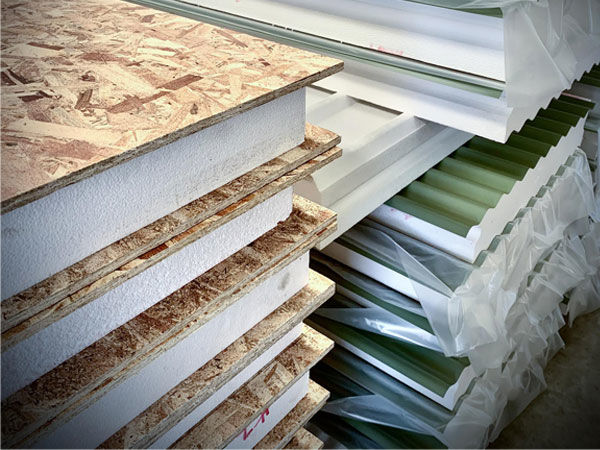Structurally Insulated Panels (SIPs) are known for their durability and longevity. Here are some reasons why they are built to last:
-
Strong Material: SIPs are made of two outer layers of structural material, such as oriented strand board (OSB), and a core of insulating foam. The insulation core made of polystyrene is produced using a fire retardant and a low-energy steam process, and is both safe and non-toxic. Additionally, the boards are recyclable. This construction creates a strong and rigid panel that is resistant to bending, warping, and twisting.
-
Moisture Resistance: The core of SIPs is typically made of a closed-cell foam, which is impervious to moisture. This makes SIPs resistant to mould, rot, and insect damage, which can cause traditional building materials to deteriorate over time.
-
Tight Sealing: The panels are designed with tight interlocking seams that provide airtight and watertight seals. This prevents the infiltration of air and moisture, which can cause damage to building materials and lead to mould and mildew growth.
-
Thermal Performance: The insulation in SIPs provides excellent thermal performance, which helps to keep indoor temperatures stable and reduces energy consumption. This also means that the panels are less susceptible to temperature-related damage, such as cracking and warping.
-
Structural Strength: SIPs have been proven to be strong and durable in a variety of applications, including walls, roofs, and floors. They can withstand extreme weather conditions, such as high winds, heavy snow loads, and earthquakes.
-
Longevity: SIPs have a longer lifespan than traditional building materials. This means that buildings constructed with SIPs can last for decades without needing significant repairs or maintenance.
Overall, the combination of strong materials, moisture resistance, tight sealing, thermal performance, structural strength, and longevity make SIPs an ideal choice for buildings that are designed to last. They offer a durable and sustainable alternative to traditional building materials and can help to reduce the environmental impact of construction.
Ready to get started? Download our free guide, Smart Budgeting for your Dream Home or get in touch for a friendly chat.
Don’t let confusion, delays, or uncertainty hold you back. Build your dream home with Hycon — where trust, clarity, and communication come standard.

